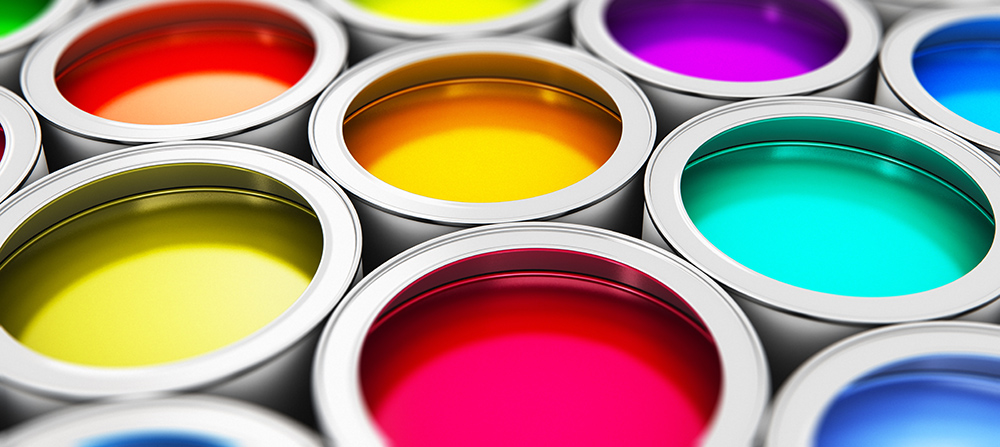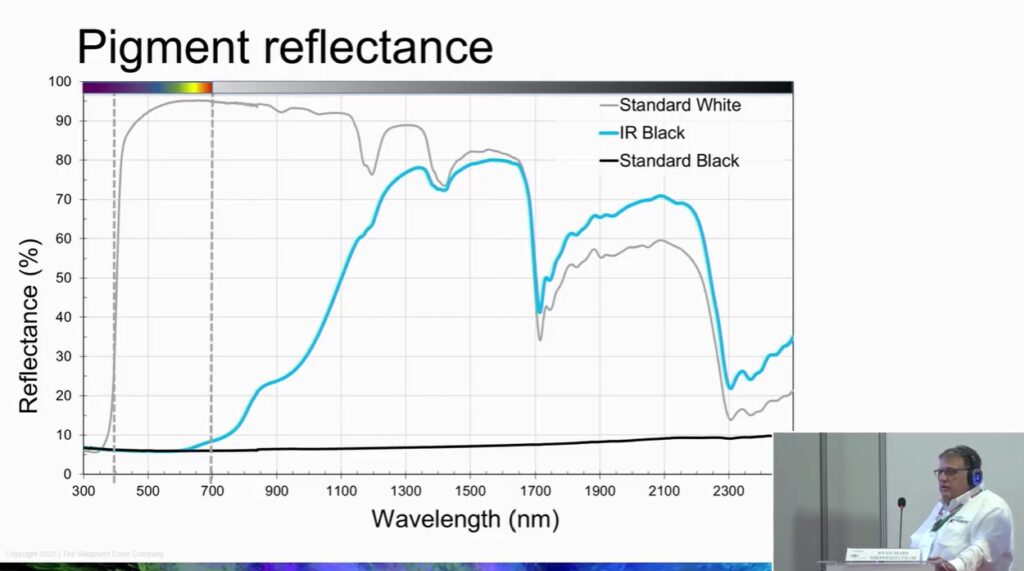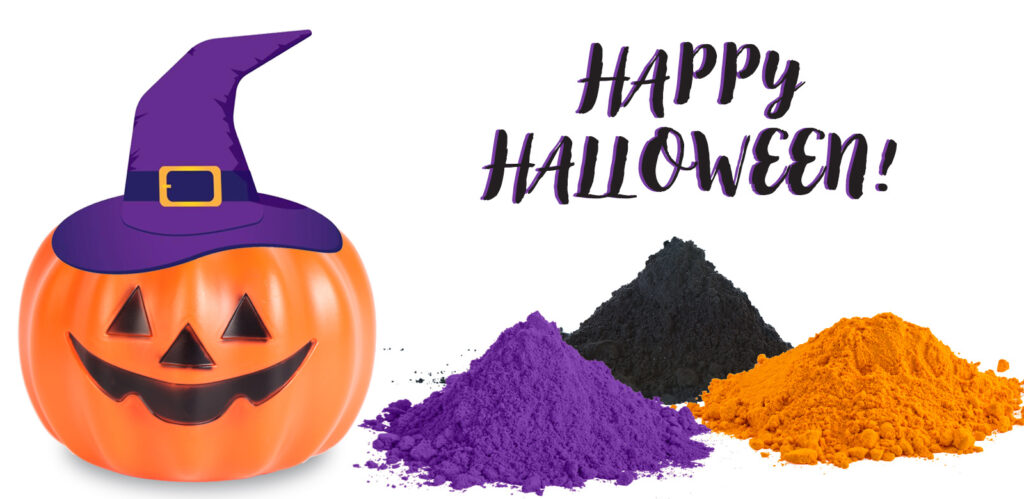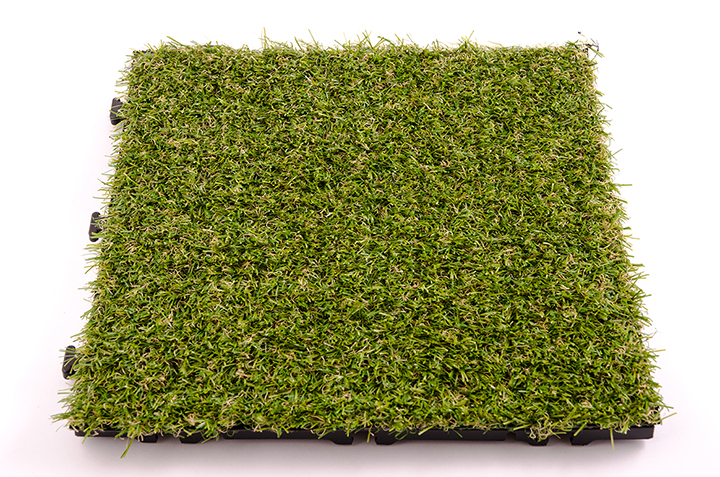NEWS
High Performance and Special Effect Pigments Update

Coatings World Editor, Kerry Pianoforte, interviewed some of the leading high performance and special effect pigment manufacturers, include Shepherd Color's Marketing Manager, Mark Ryan, and R&D Manager, Dr. Joel Houmes.
Also included in this discussion were: Frank Lavieri, EVP sales and marketing, DCL; Markus Kleinert, business director, High-Performance Pigments and Alexander Woerndle, global technical marketing manager, Coatings at Heubach; John Robb, senior technology expert at Venator; and Eli Andreu, global marketing specialist- Color Solutions at Vibrantz Technologies.
The full article is copied below and can also be found on the Coatings World website.
CW: How did the high-performance pigments market fare in 2021?
DCL: DCL broke all sales records last year, including for high performance pigments. Demand was very strong and exceeded our capacity for some high performance grades. As a result we recently announced expansion projects to increase capacity of our bismuth vanadate and indanthrone blue pigments.
Heubach (Kleinert): Very well, the market has recovered to 2019 levels, before the global pandemic.
Shepherd (Ryan): Shepherd Color's high-performance pigments are used in building products of all types, along with electronics and other in-demand uses. Market demand for our pigments have been strong and shows little signs of letting up. Logistical and supply chain issues are still apparent, but sales remain brisk. We are currently expanding our production capacity at our world-class facility in Cincinnati, OH.
Venator: At Venator, 2021 sales increased significantly versus the previous year and we continue to see robust demand in North America and Europe. Our orderbooks remain strong across all applications, in both titanium dioxide and performance additives.
We expect this demand profile to continue throughout 2022 and we also expect to see recovery in Asia as COVID lockdowns in China are lifted. Supply for all our products however remains tight and inventories are significantly lower than historical seasonal norms.
Vibrantz: As such, the demand for HPP was very high during 2021 as economies all over the world were picking up and overall stocks were very low after the 2020 lockdown. All this caused a higher demand than what could be fulfilled production-wise as there were a lot of drawbacks in production. Those drawbacks were caused by late deliveries on the raw material side and people out for production due to local upswings of the COVID-19 cases.
Yes, demand was high, but very difficult to cope with it and fulfill all this demand, so results were excellent but could have been much better without these drawbacks.
CW: Has the market seen recovery from the effects of the pandemic, and when do you expect to return to 2019 numbers?
Venator: Demand continues to be robust and our order book is healthy. In terms of numbers, we have already surpassed those achieved in 2019 for our ALTIRIS® range of solar reflective pigments. In addition, we expect an increase in 2022 sales volumes compared to 2021 consistent with increased production. Again, however, this increase will be constrained by low inventory levels and the reliability of supply chains and shipping availability.
Vibrantz: 2022 started very strong and was performing at the same level of the second half of 2021. In the meantime, a lot has happened like the Russian-Ukraine war, major lockdowns in China, and the continuous increase of energy and all basic raw materials. These events could lead to a delay in the further recovery of the economy. Initially, the expectations for 2022 was that the level of sales would have been minimal the one of 2019, but today all will depend on how long the mentioned roadblocks for recovery will last and what will be the final impact of them. Final recovery could be 2023 or maybe beyond.
CW: Considering the higher cost associated with these types of pigments, what are the main advantages of using them?
DCL: The term "high performance pigments" may be a bit of a misnomer. While these pigments do offer higher levels of performance in various coatings and plastics applications, this is only part of their benefit. Many high performance pigments also offer the best value in a given application because they have higher durability, better opacity or color strength. For example, we have done many yellow, orange and red color matches showing DCL RMXS Bismuth Vanadate to be the best value-in-use both in terms of color cost and over the life of the painted article. It has better value-in-use than pigments one-third of its cost because it has the rare combination of opacity, color strength and outdoor durability.
Heubach (Kleinert): There is a very good balance between chroma (strength), transparency/opacity and excellent fastness (light, weather, and solvent) properties; and because they are typically the most stable organic pigments, they are suitable for the most demanding applications like automotive OEM and other types of industrial coatings. There are even some color indices that are suitable in applications with strict regulatory guidelines, such as food applications.
Shepherd (Ryan): The inorganic nature of Shepherd Color's pigments brings inherent inertness that gives advantages in weathering, heat stability and resistance to most degradation. When other pigments fail, chemists and formulators reach for a sample of Shepherd Color pigments. Using these pigments is made even easier with a wide-range of our chemistries available in our Dynamix easily-dispersed product line. It's the fastest and easiest way to get the optimal pigment properties without the time and resources spent grinding pigments.
Venator: Our high-performance pigments are, of course, trusted to bring color, vibrancy and a long-lasting flawless finish to coatings. But they do much more than that. As well as improving the appearance of coatings, they can enhance performance and durability over time. They can also make industrial processes and manufacturing methods more effective and efficient. Our solar reflective range of ALTIRIS® pigments is a prime example of the additional value high-performance pigments can deliver. We've been a leading player in this market for more than a decade. Designed to help buildings stay cooler for longer, our ALTIRIS® pigments can be incorporated into exterior coating products, to help slow down the speed at which the sun heats up the outside of a building. Suitable for integration into gloss and matt emulsions, across a broad color palette, ALTIRIS® pigments can help noticeably reduce the surface temperature of a building. In hot climates this can help reduce the load on energy intensive air conditioning units, which have to work round the clock to keep buildings and their occupants cool. With rising energy costs and countries worldwide setting carbon net zero targets, these attributes have never been more important, or more in demand.
Vibrantz: HPP have always been substantial higher in price than the more traditional pigments. With the current increasing cost to produce pigments, whatever grade it is, the balance to use HPP will go further into the direction of HPP. The advantages of HPP, like the better fastness properties (weather, light, heat…), will even be a higher offset towards the more traditional grades where the relative cost impact (like energy) could be higher.
CW: What high performance pigments has your company recently launched and what are their primary applications?
DCL: Our newest pigment is 2938 Napthol Red 238, a very transparent blue shade red pigment with low viscosity in water ink applications. It is targeted for tag and label printing requiring a low level of bleed from the label into foodstuffs they come in contact with. A great deal of our R&D work is directed at bringing on new capacities in North America and Europe to shorten supply lines to our customers of benzimidazolones, yellow pigments for plastic packaging, indanthrone blue and bismuth vanadates.
Heubach (Woerndle): "Inventing" new color indices is not the primary target of the industry anymore. The focus now is on product improvements, lower environmental footprint, and in improving efficiency and value-in-use. That said, however, some of the more recent areas of development for us has been in expanding the scope of applications into new industry sectors, such as 3C coatings and 3D printing, particularly for our Hostatint A 100-ST and Hostafine ranges of pigment dispersions. We've also been quite busy with our latest innovation to improve recycling of black plastics with our Graphtol Black CLN colorant.
Shepherd (Ryan): We introduced a bismuth vanadate Yellow 30C133 and an IR optimized chromium oxide Green 30C859 to further expand our Dynamix easily-dispersed pigment line. The BV yellow complements our one-of-kind NTP Yellow and our RTZ Orange for high-performance yellow color space coverage like exterior powder and liquid coatings. Green 30C859 is a dark-shade green with outstanding IR reflectivity for cooler colors. Our Blue 20G599 exhibits the highest chromaticity of any blue that we have seen. That's why we call it Max Chroma Blue. While in a new color space, it is CI Pigment Blue 28 (Cobalt Blue) with global chemical registry listings and will be useful for coil and extrusion coatings, powder coatings, automotive, and gel coats.
Venator: In recent years, our product innovation pipeline has concentrated on producing pigments and additives aligned with the need for more durable, more sustainable coatings. This work is now coming to fruition as we see increased demand for products from our ALTIRIS, Blanc Fixe and REFLECT ranges. Capable of delivering up to ten points of additional reflectance over well formulated solar reflective coatings, at the existing film thickness, ALTIRIS pigments are proven to have the capability to improve the overall weatherability and durability of coatings by limiting photo and thermal degradation. Our comprehensive portfolio of barium sulfate pigments (Blanc Fixe) makes it easier to control a coating's opacity. Used separately, or together with other pigments, barium sulfate can help coatings manufacturers boost the solar reflectance of white paints. We also offer a range of mixed metal oxide pigments under the REFLECT brand that are chemically engineered to maximize total solar reflectance, particularly in the infrared region. Used to keep products cool, REFLECT pigments are deployed in applications where heat management is an issue, such as automotive interiors and exteriors, paints for building facades, vinyl siding and fascia systems, and roof coatings and tiles.
Vibrantz: We are continuous improving our grades to a higher standard quality level if they are HPP or not. By doing so, we even upgrade a commodity pigment to a more sophisticated level of quality to cover some niche applications. Main focus applications are, for example, pigments for food packaging (inks, plastics), energy management in coatings and construction, recycling in plastics and not to forget color customization on demand for the customer.
CW: What markets (e.g. automotive, electronics, etc.) have the most potential for growth for high performance pigments in the future?
DCL: We are seeing growth of our high performance pigment sales across all coatings applications. There is a trend toward more chromatic automobiles, which is growing demand for our quinacridone, perylene and indanthrone blue pigments, but we also see industrial coatings formulators, for example, using more high performance pigments as well to take advantage of their better value-in-use.
Heubach (Woerndle): As mentioned, there are many new markets that have been opening in electronics (3C) type coatings as well as 3D printing, and there has been more recent growth in the more traditional markets, such as non-impact printing (i.e. digital) and automotive coatings. We are also anticipating future growth in general industrial type coatings, with the trend to protective paint as a service, as traditional cost-driven manufacturers evolving to more sustainable models.
Shepherd (Ryan): Perhaps the most surprising thing about the pigments that Shepherd Color produces are the interesting ways our industry partners use our pigments. A recent search of the USTPO database revealed hundreds of patents that specifically mention Shepherd Color pigments by name. Shepherd pigments can be used in laser marking, hyperspectral vision enhancing coatings, laser direct structure (LDS) coatings for the incorporation of electronic pathways and other uses. All of these offer opportunities for differentiated coatings in growing markets.
Venator: Venator is seeing a marked increase in demand for advanced pigment technologies that can give exterior paints and coatings solar reflective properties and assist with the heat management of buildings. As the race to carbon net zero gathers pace, we have witnessed a significant uplift in questions about our titanium dioxide, barium sulfate and mixed metal oxide pigments from formulators worldwide. These formulators are being asked to produce product that will help slow down the speed at which the sun heats up the outside of residential and commercial properties. As such, we expect this to continue to be a high growth area.
Vibrantz: The drivers for growth of HPP will be determined by the expectations of the final customer, regulatory and different stakeholders and this in numerous applications. If it's in packaging (inks/plastics) or automotive coatings, powder/coil coatings and many other applications, we see growth in demand in all these applications.
CW: What new technologies are your R&D labs working on (e.g. smart coatings, nanotechnologies)?
Heubach (Kleinert): Some of the topics we are addressing now through R&D are in continuously improving the balance between chroma and transparency, weather and light fastness, and paint rheology versus dispersibility. And we're always working on new ways to make our products easier to use for our customers, from developing new packaging technologies to reduce waste and carbon footprint to furthering our development of bio-based pigments.
Shepherd (Houmes): Shepherd Color is always looking to bring value to our customers by exploring inorganic pigments that are new, and improving chemistries already having regulatory approval. At the same time, we are looking to improve the sustainability of our products through the chemistry used and the process to make them. Besides the highly durable color our pigments provide, we also look at adding functionality to the pigment that can be exploited for new properties in high performance coatings.
Venator: Our pigments and additives experts for the coatings industry are continually innovating - working collaboratively with customers to create new products that support the formulation of technically advanced coatings. We have several new pigment grades in the pipeline - but can't reveal any further details at this time.
Vibrantz: Most R&D work is focused to give more or better functionality next to the color, that pigments are offering. Energy management or Lidar applications based on NIR reflecting pigments is a good example of this.


